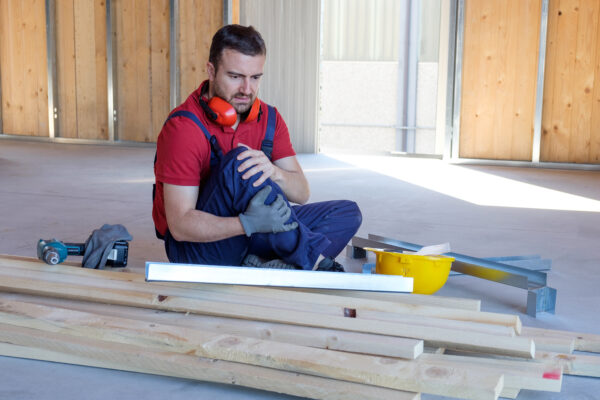Construction sites are known for their dynamic and often hazardous environments, where various factors can impact worker safety. One such influential factor is the weather. In Oklahoma, where construction projects are abundant and weather patterns can be unpredictable, it is crucial for construction firms to understand how weather conditions can affect safety on their job sites. The Murray Law Firm is dedicated to promoting construction site safety and educating industry professionals about the potential risks associated with adverse weather conditions in Oklahoma. In this article, we will explore the impact of weather on construction site safety and highlight the essential requirements for construction companies operating in the state.
Understanding the Influence of Weather on Construction Sites
Oklahoma’s climate is characterized by varying weather conditions, including extreme temperatures, thunderstorms, tornadoes, and heavy rainfall. All these elements can have significant implications for construction sites and the safety of workers. Understanding the impact of weather is essential for construction companies to implement effective safety measures and protect their workers from potential hazards.
Extreme Temperatures:
During the summer months, Oklahoma experiences scorching temperatures that can lead to heat-related illnesses like heatstroke, heat exhaustion, and dehydration. In contrast, winter can bring freezing temperatures that may result in frostbite and hypothermia. Construction workers are particularly vulnerable to these extreme temperature conditions, as they often perform physically demanding tasks outdoors. It is crucial for employers to provide adequate training, breaks, and access to water and shade to prevent heat-related illnesses and cold-related injuries.
Thunderstorms and Tornadoes:
Oklahoma is part of “Tornado Alley,” making it prone to severe thunderstorms and tornadoes, especially during the spring and early summer. Construction sites are vulnerable to strong winds, flying debris, and lightning strikes during these weather events. Companies must have a clear evacuation plan in place and designated safe shelters for workers during severe weather. Additionally, workers should be educated on recognizing weather warning signs and the appropriate actions to take in such situations.
Heavy Rainfall and Flooding:
Rainfall is a common occurrence in Oklahoma, and heavy rains can lead to flooding on construction sites. Floodwaters pose risks of electrocution, structural collapse, and potential drowning hazards. Construction companies must ensure proper drainage systems are in place and that workers are informed about safety procedures during flooding incidents.
Weather-Related Safety Requirements in Oklahoma
To safeguard construction workers from weather-related risks, Oklahoma has established specific safety requirements that all construction companies operating within the state must adhere to. Failure to comply with these regulations can result in severe penalties and jeopardize the well-being of workers.
Occupational Safety and Health Administration (OSHA) Standards:
OSHA sets federal safety standards that apply to all construction sites, regardless of location. These standards cover various aspects of construction safety, including personal protective equipment (PPE), fall protection, electrical safety, and hazard communication. Companies in Oklahoma must comply with OSHA regulations to maintain a safe working environment for their employees.
Emergency Action Plan:
Each construction site in Oklahoma must have a well-defined Emergency Action Plan (EAP) to address weather-related emergencies like thunderstorms, tornadoes, and floods. The EAP should outline evacuation routes, designated safe areas, and the chain of command for reporting emergencies. Regular drills and training sessions should be conducted to ensure that all workers are familiar with the EAP.
Heat Stress Prevention:
During the hot Oklahoma summers, companies must implement a heat stress prevention program that includes providing shaded rest areas, hydration stations, and scheduled breaks. Training workers to recognize the symptoms of heat-related illnesses is also essential for early intervention.
Cold Weather Precautions:
In the winter months, employers must take precautions to protect workers from cold-related hazards. This includes providing appropriate clothing and equipment, scheduling work during warmer hours, and allowing extra breaks for warming up.
Lightning Safety:
Construction companies should have a clear policy on lightning safety, which involves identifying safe shelters and establishing protocols for suspending work during thunderstorms with lightning in the vicinity.
Navigating the Unpredictable: Weather and Safety
As Oklahoma’s construction industry continues to thrive, it is crucial for employers and workers alike to recognize the unpredictable nature of weather and take proactive measures to mitigate risks. Let’s delve further into some essential steps that construction companies can take to safeguard their workers from weather-related hazards:
Monitoring Weather Conditions:
Before commencing work each day, construction companies must closely monitor weather forecasts and advisories. Modern technology provides real-time updates, allowing site supervisors to make informed decisions about work schedules and potential weather-related risks. The ability to adapt plans based on weather predictions can significantly improve worker safety.
Implementing Personal Protective Equipment (PPE):
Properly equipping workers with appropriate PPE is a fundamental aspect of construction site safety. Depending on weather conditions, workers may require specific gear such as high-visibility clothing, thermal wear, or waterproof attire. Employers must ensure that all workers have access to and use the necessary PPE to minimize weather-related risks.
Training and Education:
Regular training sessions on weather-related safety protocols are essential for construction workers. Workers should be educated on recognizing early signs of heat exhaustion, frostbite, or other weather-related health issues. Additionally, they should know how to respond during thunderstorms, tornadoes, or flooding incidents. By enhancing workers’ awareness, construction companies empower their workforce to take proactive measures and prioritize their safety.
Lightning Detection Systems:
Incorporating lightning detection systems on construction sites can provide valuable information about lightning activity in the area. These systems issue alerts when lightning is detected nearby, enabling workers to seek shelter immediately. Investment in such technology can be invaluable in preventing lightning-related accidents.
Collaboration with Local Authorities:
Construction companies operating in Oklahoma should collaborate with local authorities, emergency services, and meteorological agencies. Building strong relationships with these organizations ensures that construction firms receive timely weather warnings and have access to emergency response plans in case of severe weather events.
Temporary Structures and Equipment Securing:
Temporary structures and equipment, such as scaffolding, tents, and signage, are particularly vulnerable to strong winds during thunderstorms and tornadoes. Properly securing these structures and removing loose materials from the construction site can prevent potentially hazardous situations.
Weather can be a powerful and unpredictable force that impacts the safety of construction sites in Oklahoma. Extreme temperatures, thunderstorms, tornadoes, and heavy rainfall can pose significant risks to construction workers. Adhering to Oklahoma’s safety requirements and implementing effective weather-related safety measures is vital for construction companies to protect their workers and avoid costly accidents.
At the Murray Law Firm, we understand the importance of construction site safety, especially concerning weather-related hazards. If you or your construction company need legal guidance or representation in matters related to construction site accidents, don’t hesitate to contact us. Together, we can create a safer working environment for Oklahoma’s construction industry.
